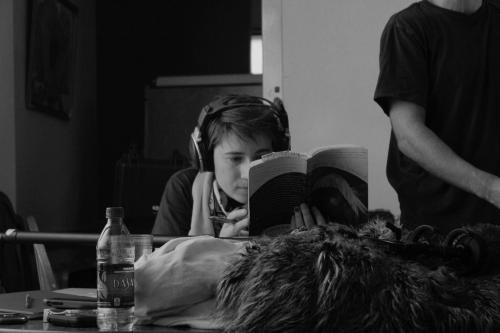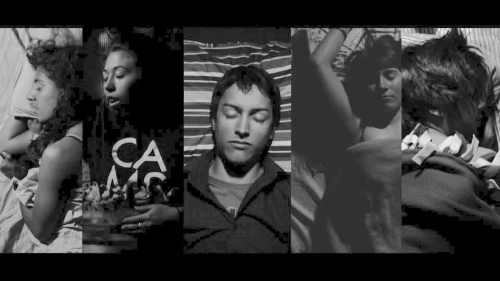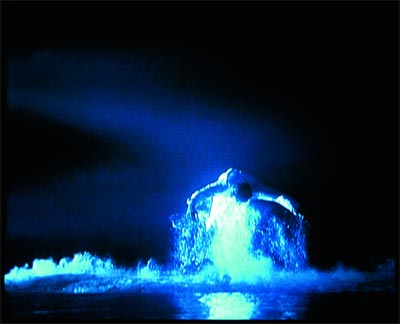I’m getting nostalgic and graduating soon, beginning to transfer emails and the like, and I discovered this in my Drafts box of my Zimbra account. I vaguely recall having written it in Microsoft Word, but then sending it (as yet unfinished) to myself so it would be accessible on my Dad’s iPad. It was, I think, for the purposes of referencing it in my impassioned justification to my parents, in a small cafe in SoHo, of my intentions to become a professional psychogeographer.
Re-reading it, I’m reminded of how quickly I fall in love. And that it really is fun to get lost and wander on occasion — or perhaps that this is what makes life worth living.
—– Original Message —–
From: “Anna Swanson” <swansona@carleton.edu>
To: “Anna Swanson” <swansona@carleton.edu>
Sent: Thursday, 23 June, 2011 11:08:26 AM
Subject: psychogeo rant
INTRODUCTORY THOUGHTS
I am undeniably enthralled by the world of potential that is this ‘psychogeography’ – a slippery term, at once very specific in its historical implications, yet expansive as we apply it in a backwards glance to all manner of artists, drug addicts, authors, wanderers, theorists – many (the vast majority) of them male. But while it is a historical practice, it is exploding as I write, largely because, it seems to me, post-modern theory and art is obsessed with place and space and the dichotomy and interplay of those concepts, obsessed, to an extent with ourselves, and the data we generate, seeking theory and art in daily practice, the epitome of which could be said to be walking. On one level, this is incredibly silly, to say that simply taking a walk is suddenly critical or artistic, but it speaks to the smashing of this boundary between low and high culture – the introduction of the idea that perhaps everyone, even without knowing it, can be an artist and a theorist without even realizing it, simply by carrying out their daily lives. Perhaps, proof that life and art are no longer separate, or never were, and have finally been seen as the simultaneous processes that they are. For me, life and art feel like the same stretch of sidewalk; it is simply a matter, I think, of changing one’s shoes and, yes, going for a walk.
But here is the thing: psychogeography is not simply walking. Yes, walking is a big deal, historically, but when we look back at this so-called original definition of the concept, the words of Guy DeBord in 1955, we simply encounter it as “the study of the precise laws and specific effects of the geographical environment, consciously organized or not, on the emotions and behavior of individuals.” Not, of course, that this is the be-all and the end-all of the field – quite the contrary as we observe its rapid proliferation and thrilling transformation into all sorts of crazy and critical manifestations. But psych geography is just that – our emotion and behavior in dialogue with our environment.
I think that on an entirely personal level, this is fundamental to my own interest in psychogeography. It appears as a coping mechanism for my mental processes, a means of combating inertia, because it insists on movement, to some extent. Even when it is concerned largely with mapping or physically stationary labor of interpretation, the mind is on a journey that is noble but not inert, following paths that in themselves are the creation of meaning.
But I began this meditation with the intention of clarifying, somewhat, the (vaguely) exact nature of psychogeography in this very moment and the approach that I might prepare to take to it, as an artist, explorer, theorist, and lost little kid. In many ways, psychogeography speaks to the college student on the cusp of adulthood, to the Peter Pan in all of us, because it makes okay our natural tendencies towards uncertainty about the future and our sense that anything can happen; it takes the fear we have of this looming ‘REAL WORLD’ and gives it credence as art and theory. It makes noble our existential angst. Uncertainty about the future is by this estimation the norm, and is therefore, most certainly, quite certain in our lives. It is a beautiful and natural thing, like sex and war and photography and dance.
Phil Smith has been drawing a distinction between ‘psychogeography’ and ‘mythogeography’ – which, for his purposes, is probably a good thing to do, and is an important step in outlining the psychogeographic vocabulary that I believe needs to be laid out, to a certain extent. This is one of the many aspects of psychogeography that I see as something worth sinking my teeth into, as it were – things that need doing, for my own personal understanding, and perhaps for the coincidental benefit of a few other individuals. Who knows?
By my reckoning, psychogeography (and art, and theory, and perhaps all things) should be grounded (or sky-ed) in intellectual and/or visceral notions, but should never forget LIVED EXPERIENCE – which should prove impossible if psychogeography is practiced in a ‘proper’ manner (although I am also of the opinion that, as psychogeography is at heart the practice of taking an interest in the self and the world, it is near impossible to do so improperly, except perhaps by being non-existent aka dead, in which case the point of practicing anything is likely moot).
[Just as a side note of interest, in the first draft of this manifesto, the length of this document after typing the word ‘moot’ was exactly the length in word count of the year AD of the Battle of Hastings. I find this intriguing, although not necessarily ontologically meaningful. Simply of note.]
CONTINUUMS
Psychogeography is taking all sorts of forms in this modern moment. Some undeniable trends are the integration of new technology into the understanding of our (particularly urban) environments, such as GPS, Foursquare, Smartphones, Google Maps, and a host of other technological (almost all internet-based applications). But this, for me, begs the question: what about those of us without Smartphones? Is it really the case that we can’t engage with our environment without the aid of such constant technology, such constant integration with the virtual? There seems to be either a deep and unsettling irony to the necessity of using virtuality to explore our relationship with place and space and movement, things that are arguably very much grounded in the ‘real’, or else a need to accept that this is simply another facet of the modern urban landscape. The latter seems to be the easier option, as rejecting technology, luddite-like, is not surprisingly a significant challenge in this day and age, and it seems to be what we are doing as a broad psychogeographic community.
Still, to explore this need for technology through the means of psychogeography itself would be a very interesting piece, although one with an expiration date, because soon I myself may have a smartphone, and as the ubiquity of such technology exponentiates, the applicability of a critique may become less and less. Who knows.
But, in true consideration, virtual life/technology/internet is itself becoming so much a part of both our psyche and our landscape (even the physical landscape – just step into Times Square and you have all the proof you need) that integrating new technologies into our exploration of how our psyches interact with those landscapes makes complete sense, and perhaps to the point that failing to integrate such technologies is a sort of blindness in itself. Who knows.
But , to return to the thought that was intended to begin this section, psychogeography is almost anything right now. This is both daunting and thrilling.
To drift, something has to be at stake – status, certainty, identity, sleep.
In a drift, self must be in some kind of jeopardy.
“the streets are full of lost and lonely texts”
Assemble a street poem. Chalk it on a wall. Curate your graffiti for ten years. Photograph it regularly.
Say a mantra or read a poem, every time it ends turn left/right, take a picture
Find all of the words of a poem in order in the city, photograph them
Draw with chalk
Stalk someone
A street poem of chalk
Whenever I see someone taking a picture, ask them to take a picture of me, and take a picture of them (or take a picture together)
THEMES // METHODS













